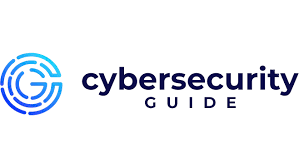The Ultimate Cybersecurity Guide: Top Tools and Strategies for Businesses and Beginners

In today’s digital era, cybersecurity has become a fundamental aspect of both personal and professional life. As cyber threats grow more sophisticated, the need for robust security measures is paramount. Whether you are a business owner or just starting your journey into the digital world, understanding cybersecurity is crucial. This guide will provide insights into the best cybersecurity tools, strategies tailored for businesses, and essential tips for beginners.
Understanding Cybersecurity
Cybersecurity refers to the practice of protecting systems, networks, and programs from digital attacks. These attacks aim to access, change, or destroy sensitive information, extort money from users, or interrupt normal business processes. Effective cybersecurity measures involve multiple layers of protection spread across computers, networks, programs, or data that one intends to keep safe.
Essential Cybersecurity Tools
To defend against cyber threats, it is vital to use reliable cybersecurity tools. Here are some top cybersecurity tools that every individual or business should consider:
-
Antivirus Software: This tool is essential for detecting and eliminating malware. Popular options include Norton, McAfee, and Bitdefender.
-
Firewalls: They act as barriers between your internal network and external threats. Effective firewalls include Cisco ASA, Sophos XG, and pfSense.
-
Encryption Software: Tools like VeraCrypt and BitLocker help protect your data by converting it into unreadable formats that can only be deciphered with a key.
-
Password Managers: These tools, such as LastPass and Dashlane, generate and store strong, unique passwords for your accounts.
-
Network Monitoring Tools: Solutions like SolarWinds and PRTG Network Monitor help track network activity to identify and respond to potential threats in real time.
Cybersecurity for Businesses
Cybersecurity for businesses is not just about protecting data but also about ensuring operational continuity and maintaining customer trust. Here are key strategies businesses should implement:
-
Develop a Security Policy: Create comprehensive policies that define security protocols and procedures for all employees.
-
Regular Security Audits: Conduct regular audits to identify vulnerabilities and ensure compliance with security policies.
-
Employee Training: Educate employees about common cyber threats such as phishing and ransomware. A well-informed workforce is a powerful line of defense.
-
Data Backup and Recovery Plan: Implement robust backup solutions and disaster recovery plans to minimize downtime and data loss in case of an attack.
-
Implement Multi-Factor Authentication (MFA): Enhance security by requiring two or more verification methods for accessing sensitive systems and data.
Cybersecurity for Beginners
For those new to cybersecurity, it can seem overwhelming. Here’s a simple cybersecurity guide to help you get started:
-
Understand the Basics: Learn about common cyber threats like viruses, phishing, and ransomware.
-
Use Strong Passwords: Create complex passwords that combine letters, numbers, and special characters. Avoid using easily guessable information like birthdays or names.
-
Keep Software Updated: Regularly update your operating system and applications to patch vulnerabilities.
-
Be Cautious Online: Avoid clicking on suspicious links or downloading attachments from unknown sources.
-
Enable Two-Factor Authentication: Add an extra layer of security to your accounts by enabling two-factor authentication whenever possible.
Conclusion
The Cybersecurity Guide is a critical component of our interconnected world. By understanding the basics, utilizing essential cybersecurity tools, and following best practices tailored for businesses and beginners, you can significantly reduce the risk of cyber threats. Stay informed, stay vigilant, and protect your digital life with these comprehensive strategies.

 A Detailed Look at the Features of the LEGO Technic Mars Crew Exploration Rover
A Detailed Look at the Features of the LEGO Technic Mars Crew Exploration Rover  How to Get Email Addresses from LinkedIn with Aeroleads
How to Get Email Addresses from LinkedIn with Aeroleads  How to Find a Phone Number Using an Address with Aeroleads
How to Find a Phone Number Using an Address with Aeroleads  How to Connect HP DeskJet 2700 to Wi-Fi: A Comprehensive Guide
How to Connect HP DeskJet 2700 to Wi-Fi: A Comprehensive Guide  The Rise of Ludo and Teen Patti Game Development Companies
The Rise of Ludo and Teen Patti Game Development Companies  Building Your Community with Event Matchmaking Platform
Building Your Community with Event Matchmaking Platform  Exploring London’s Best Butcher Shops
Exploring London’s Best Butcher Shops  Enhance Your Shop Appeal with Sydney’s Best Carpentry Services
Enhance Your Shop Appeal with Sydney’s Best Carpentry Services